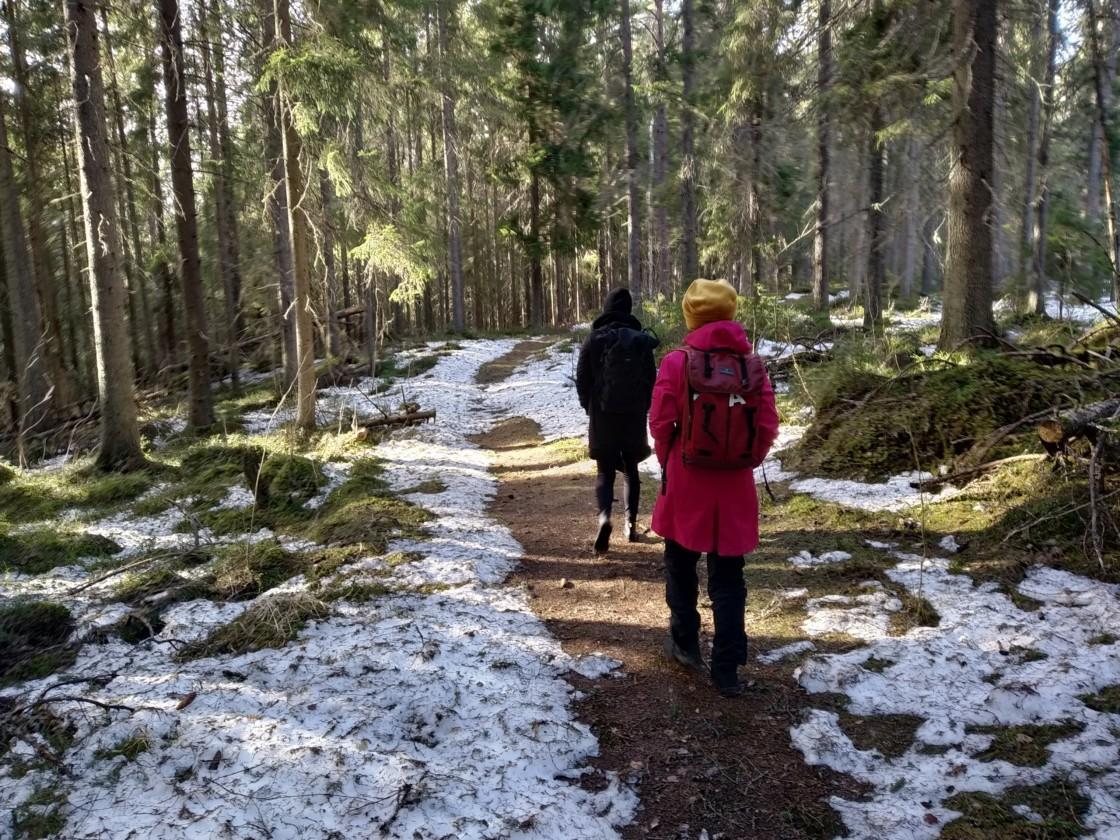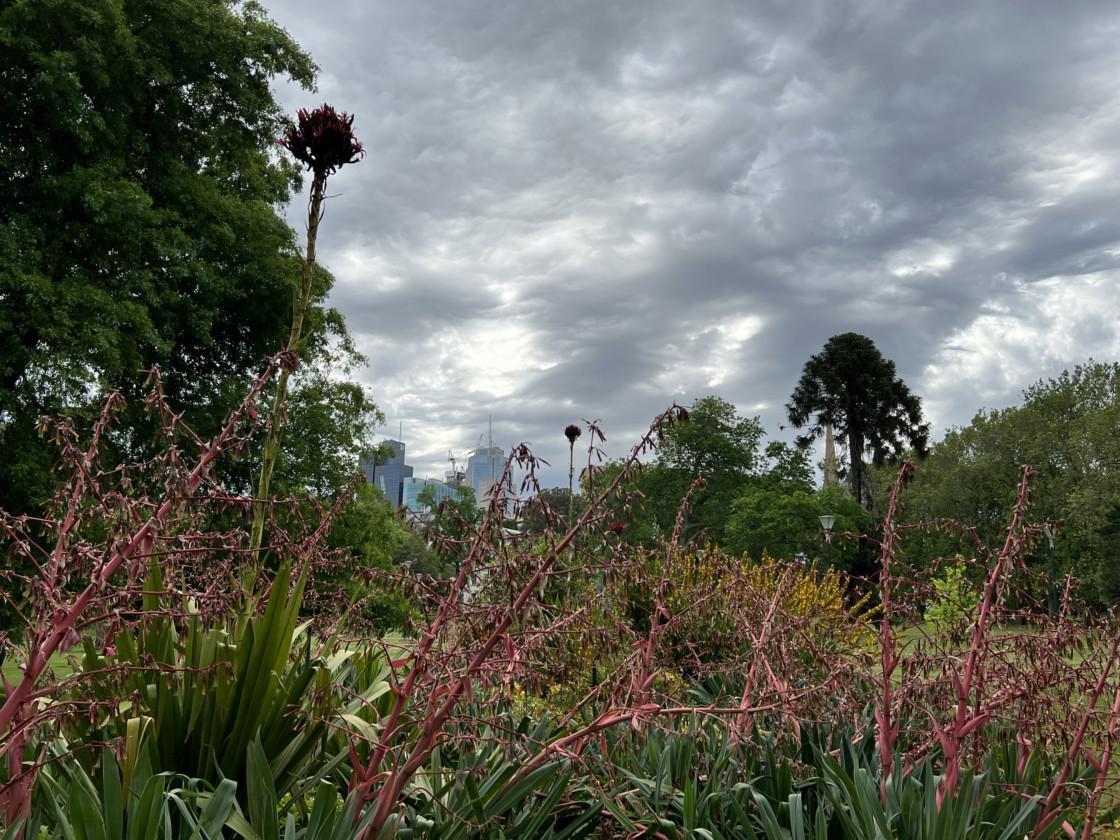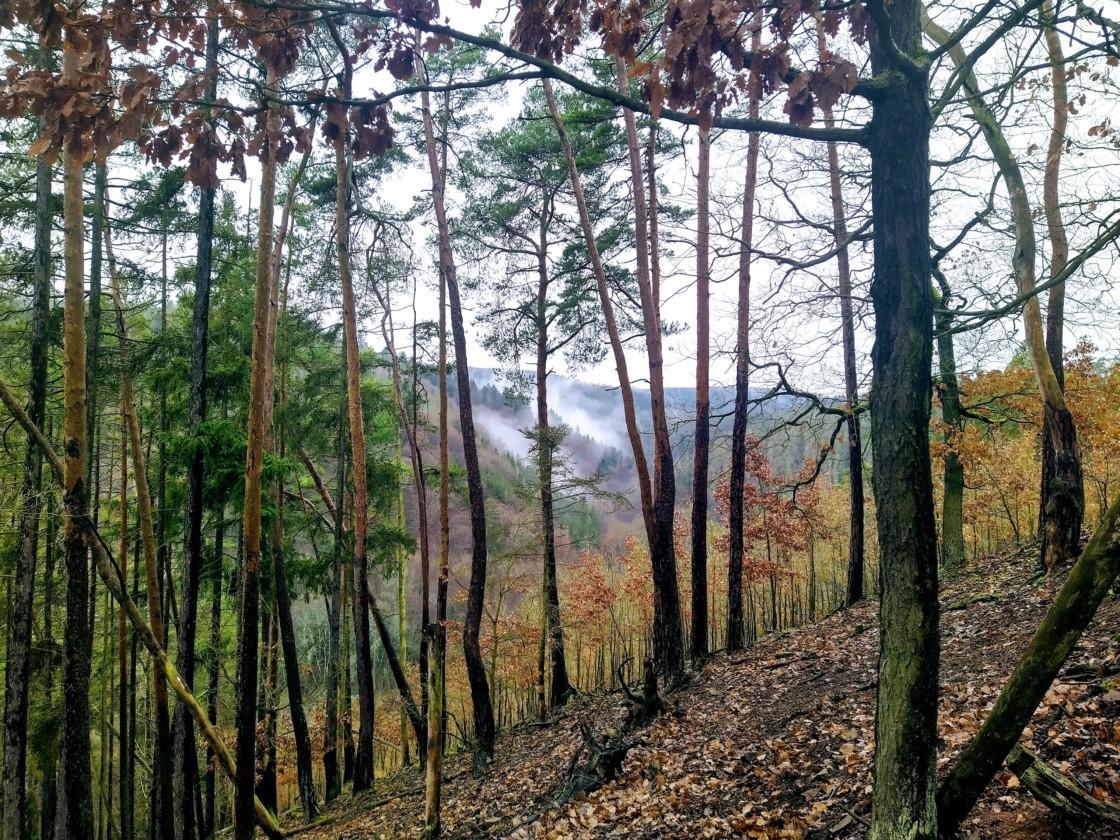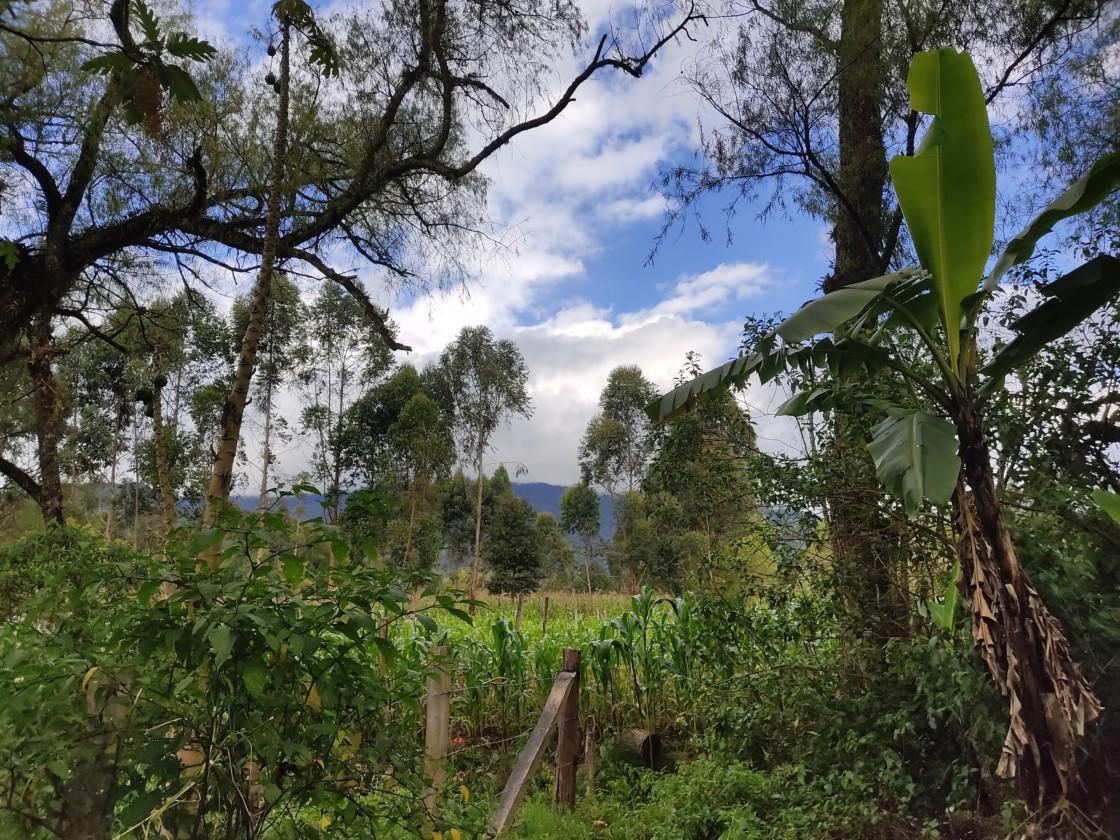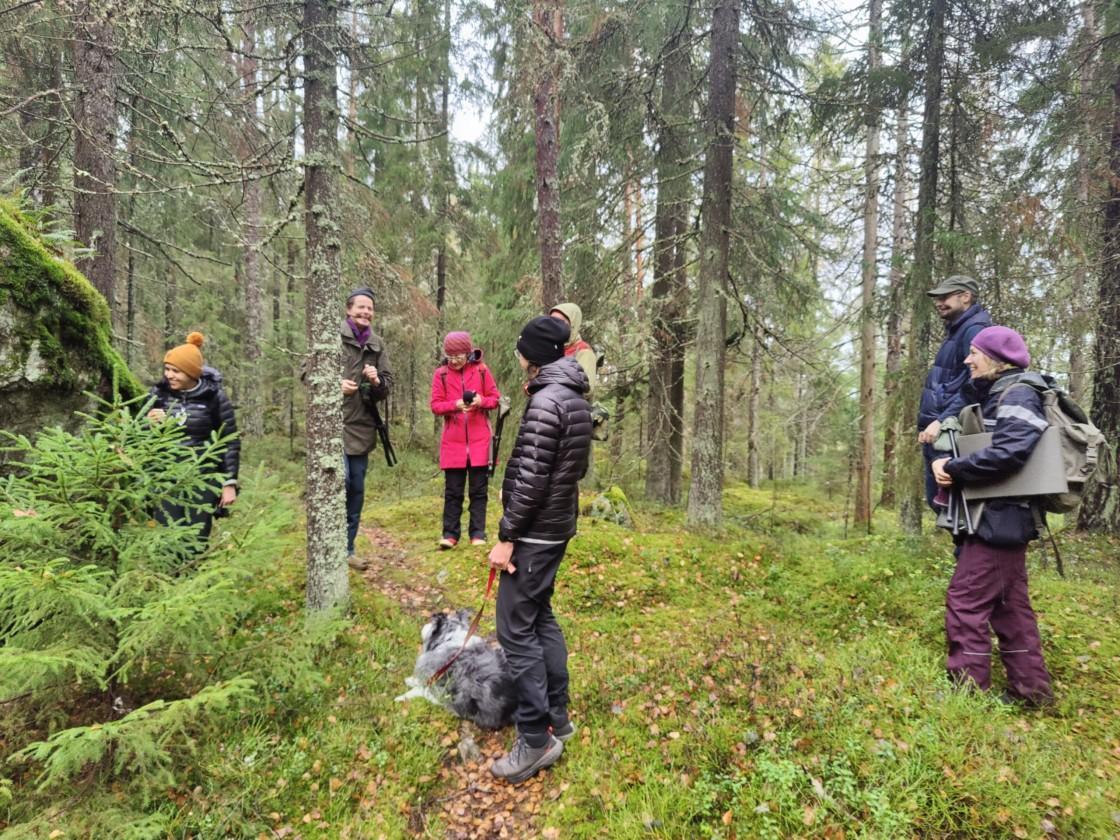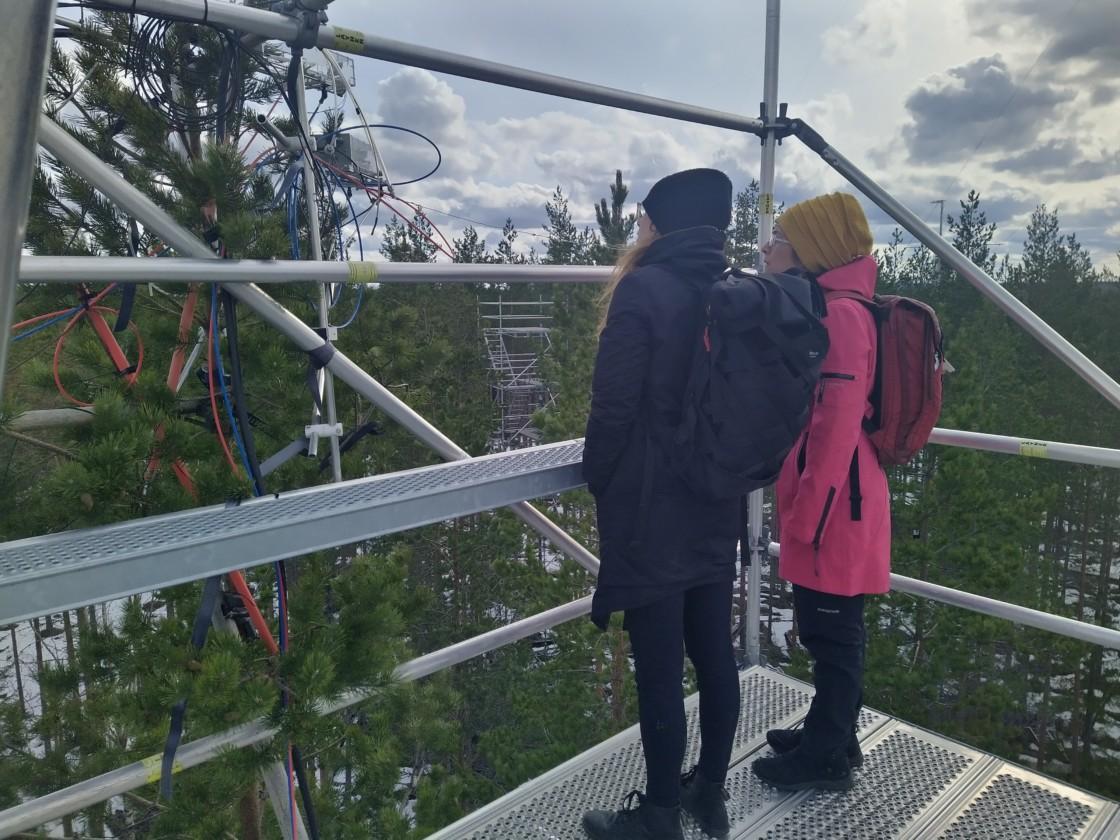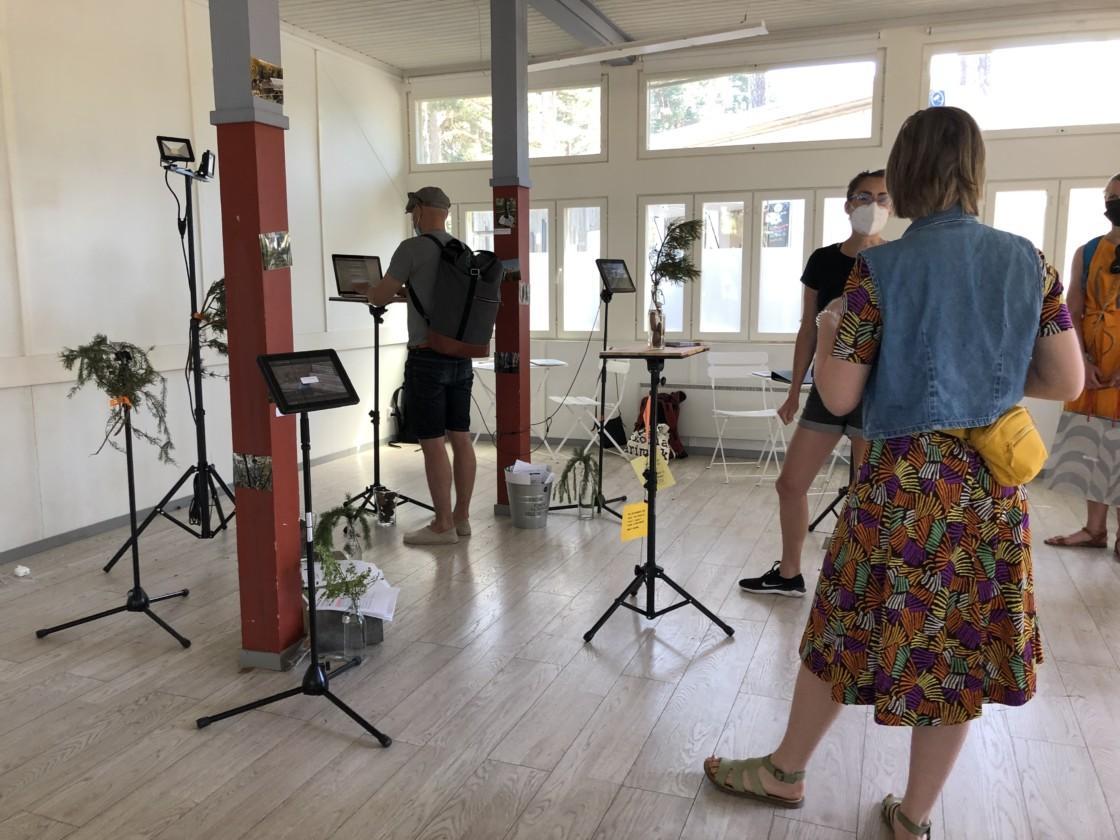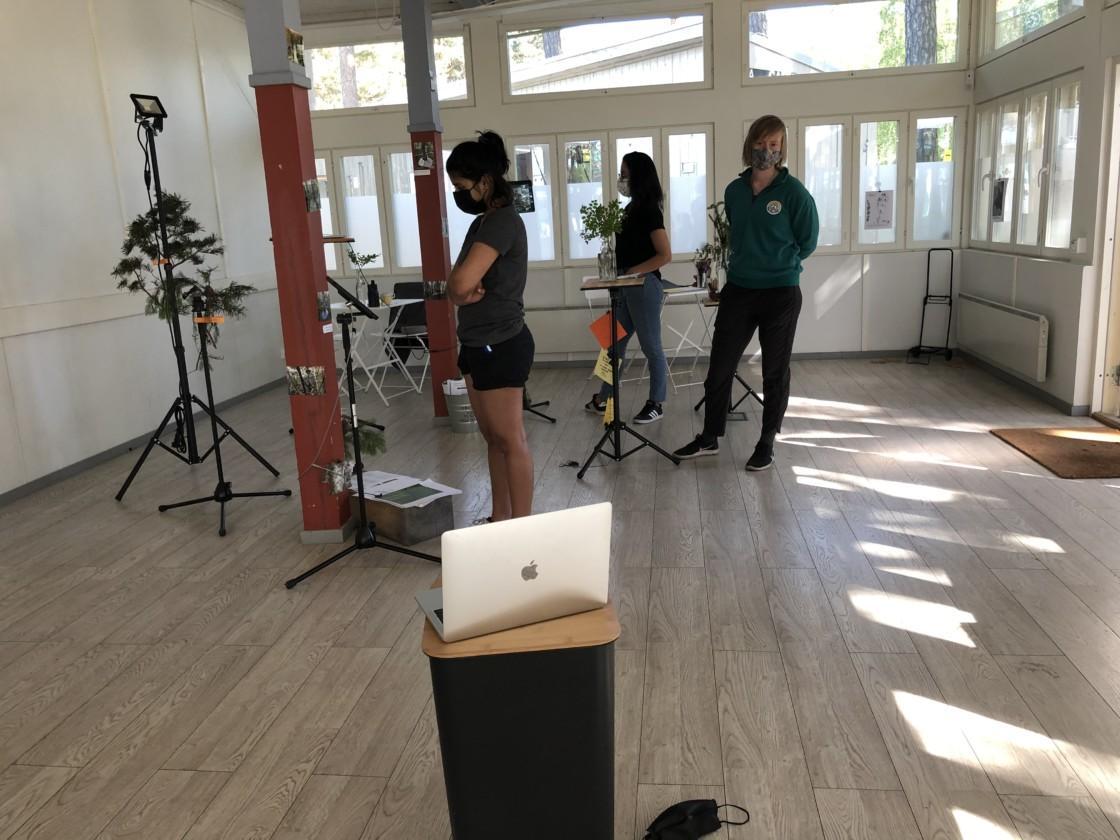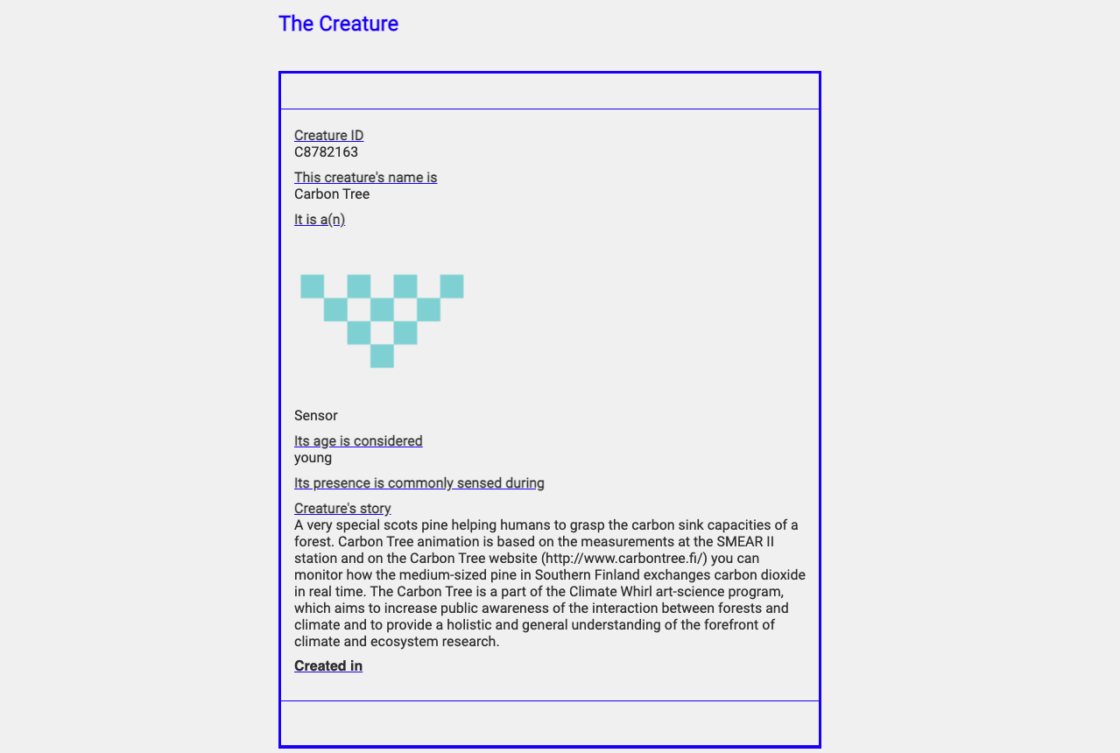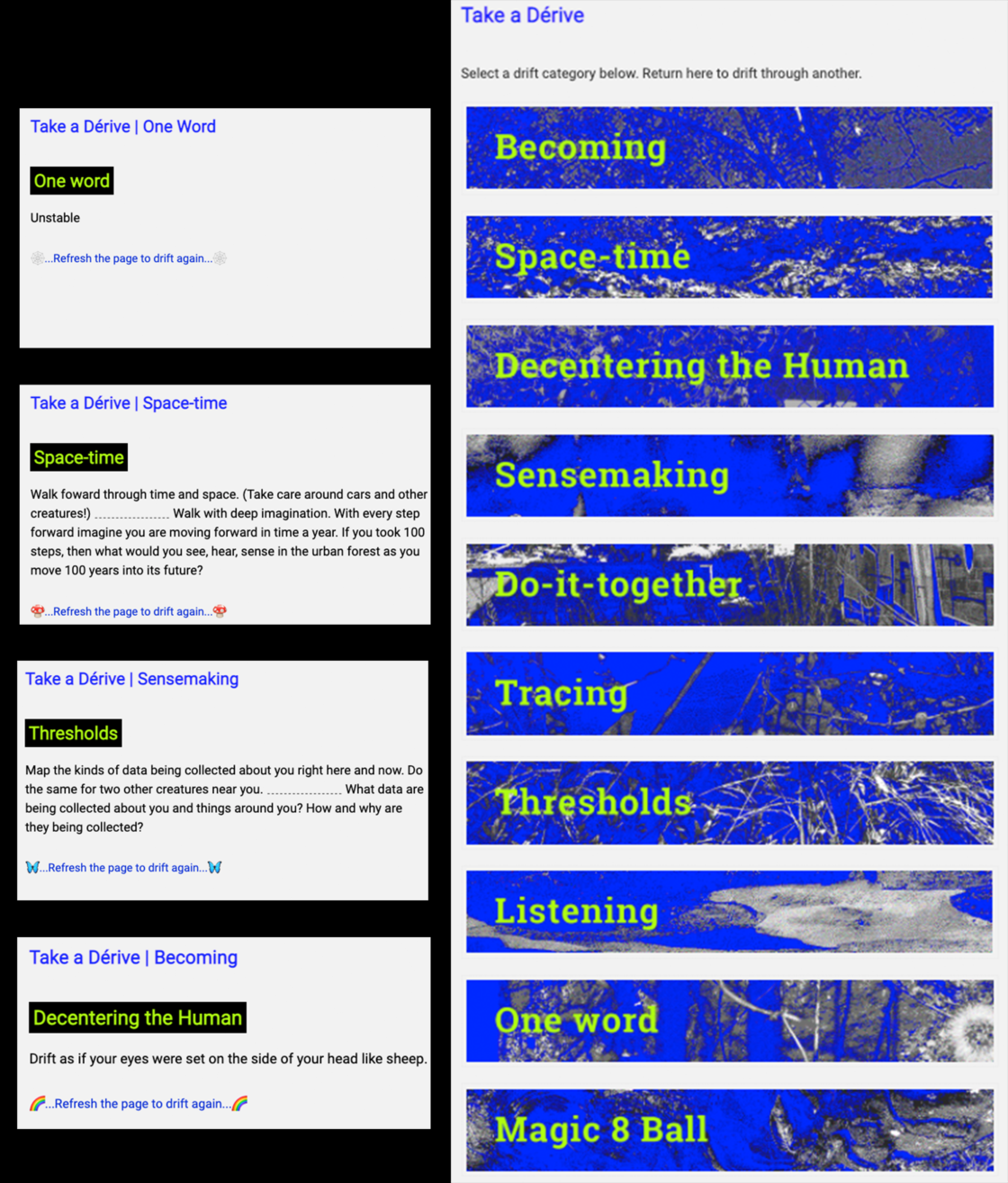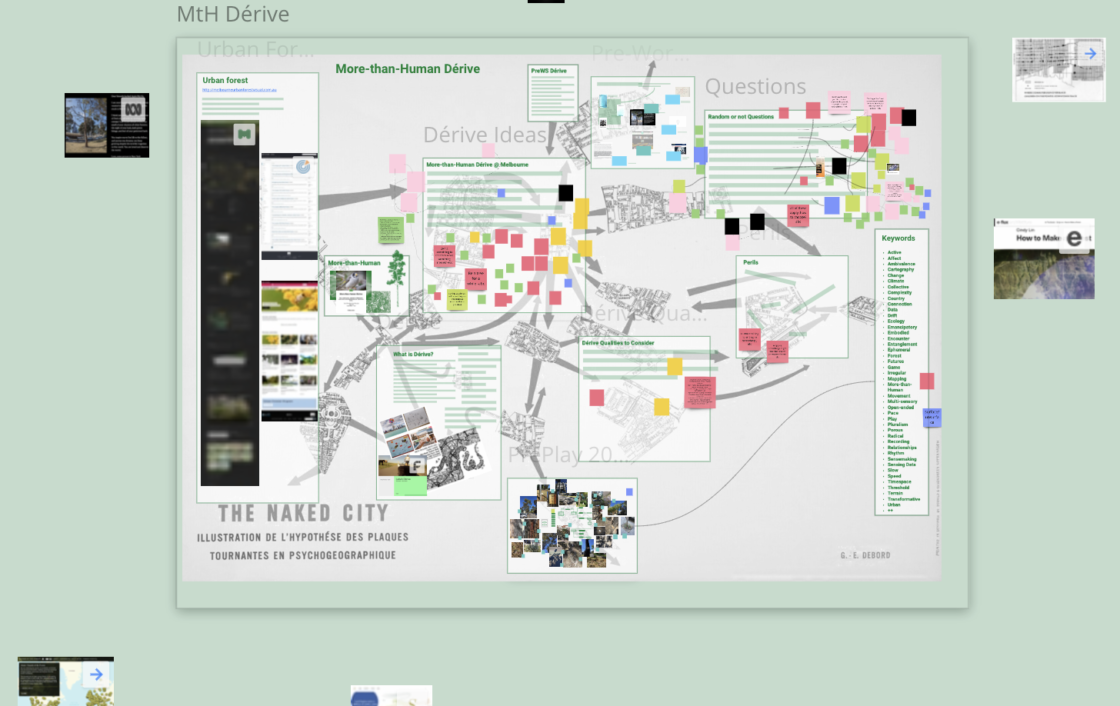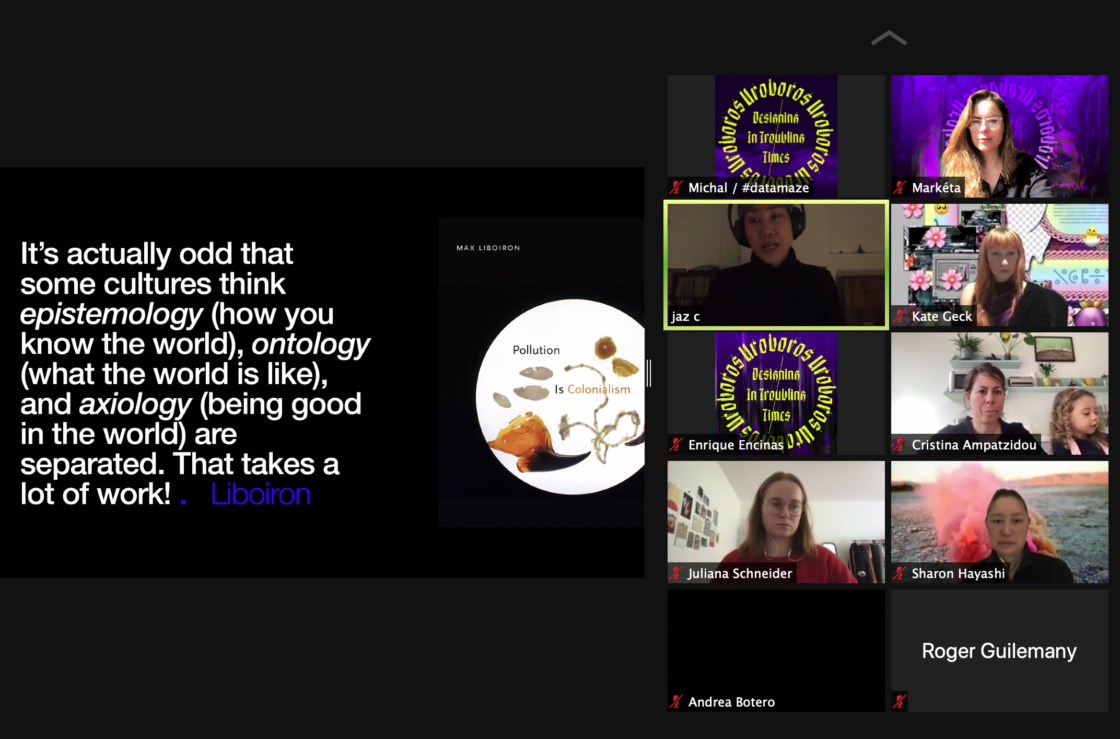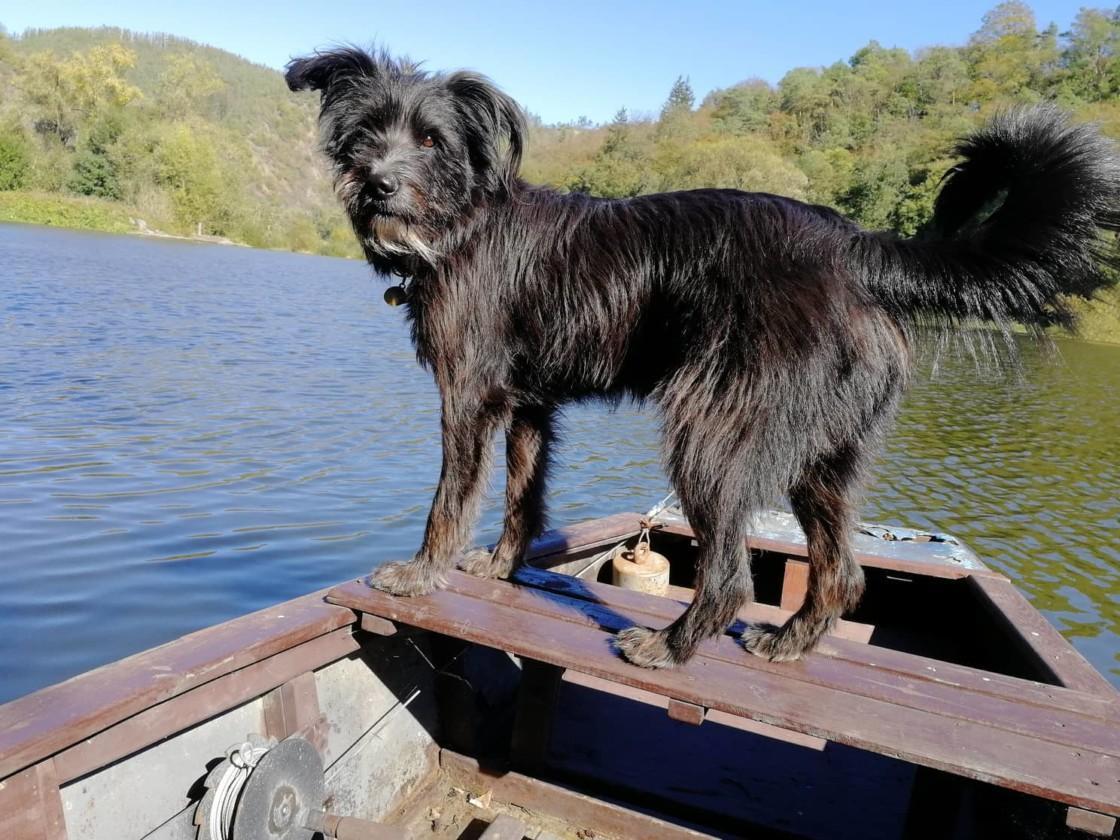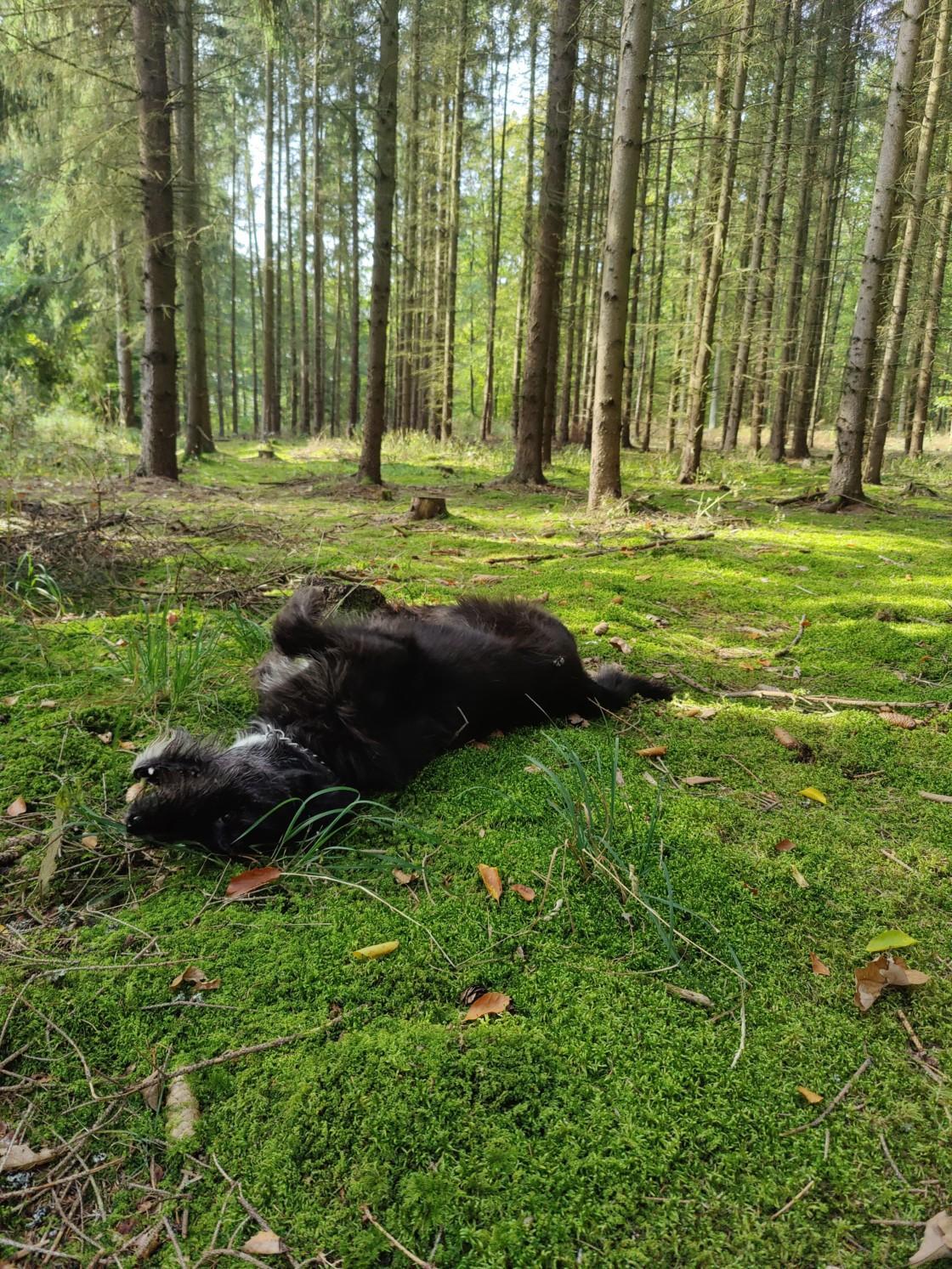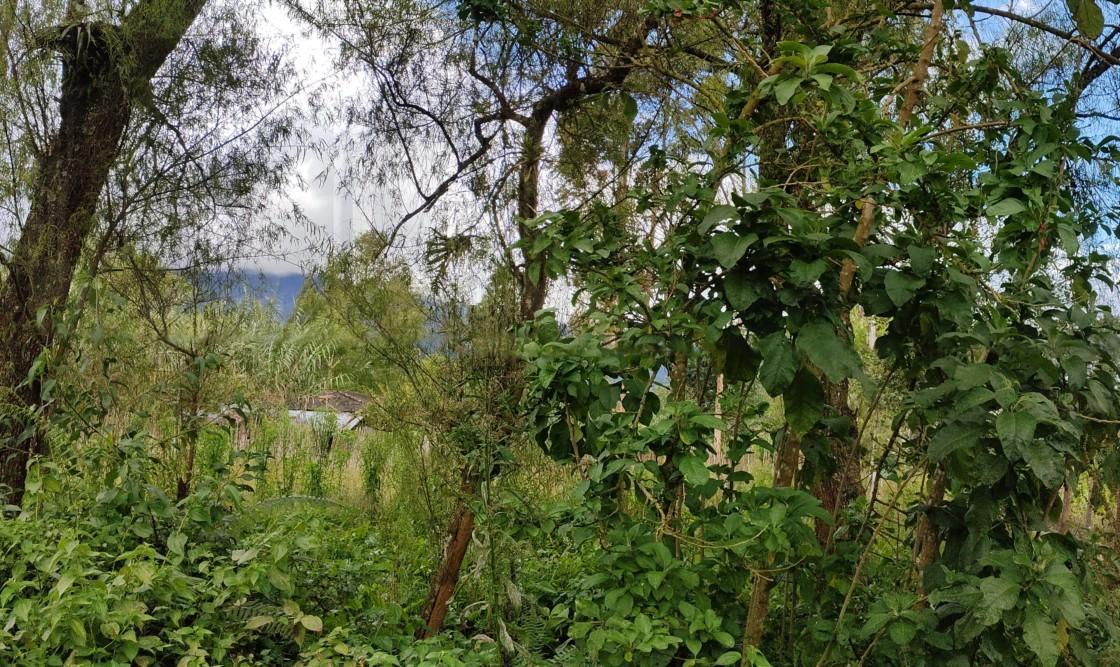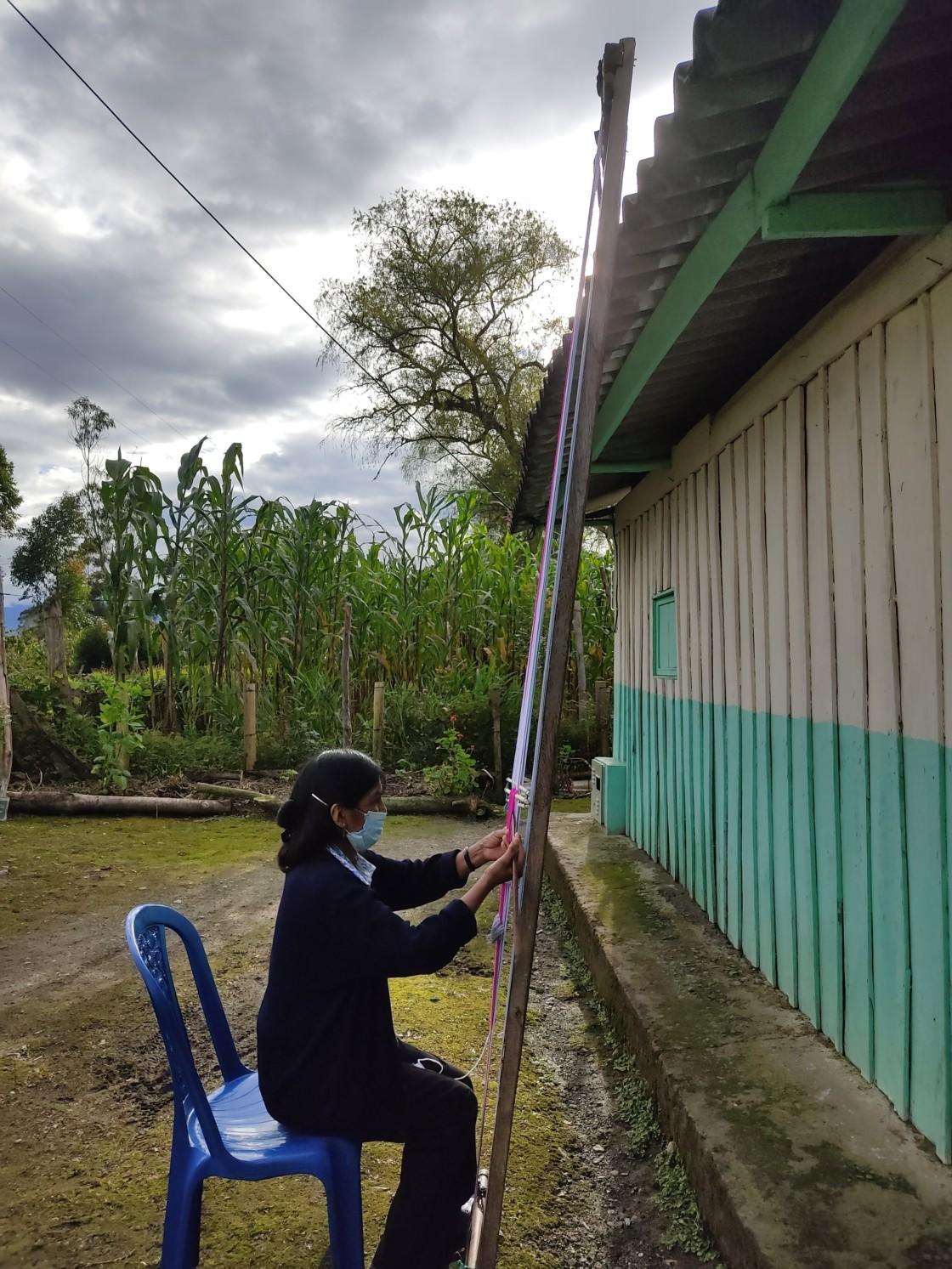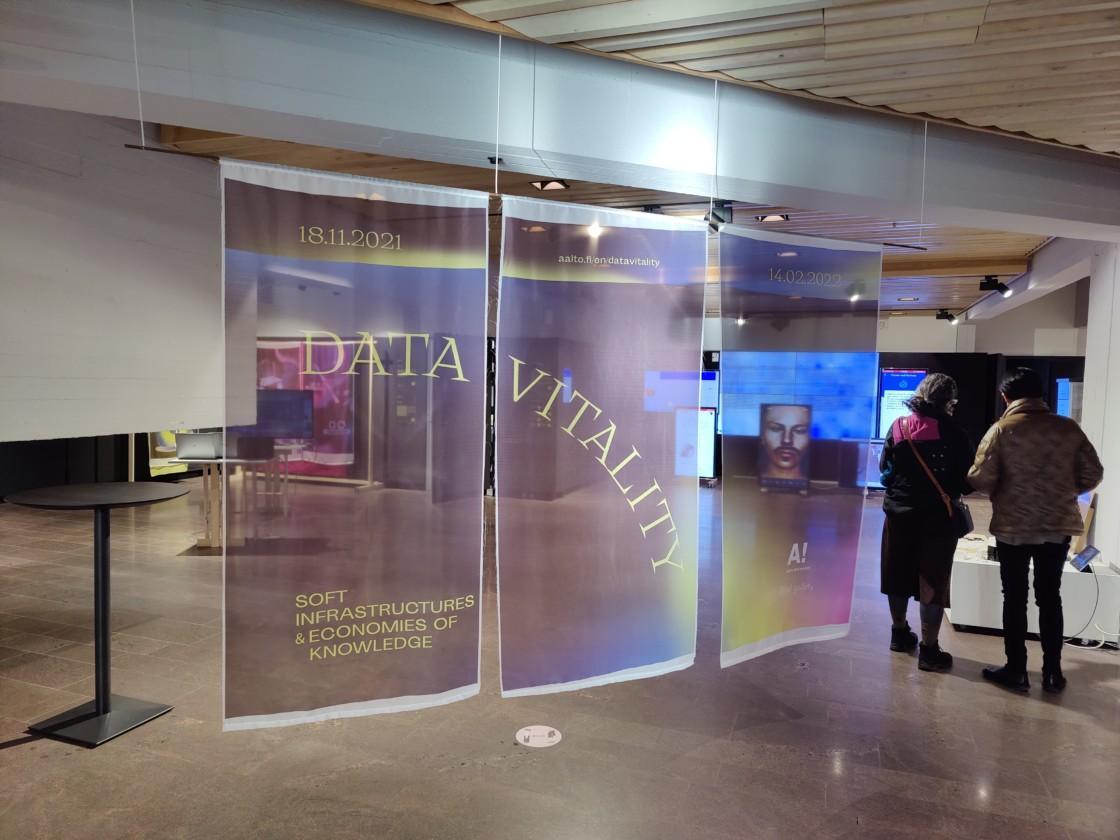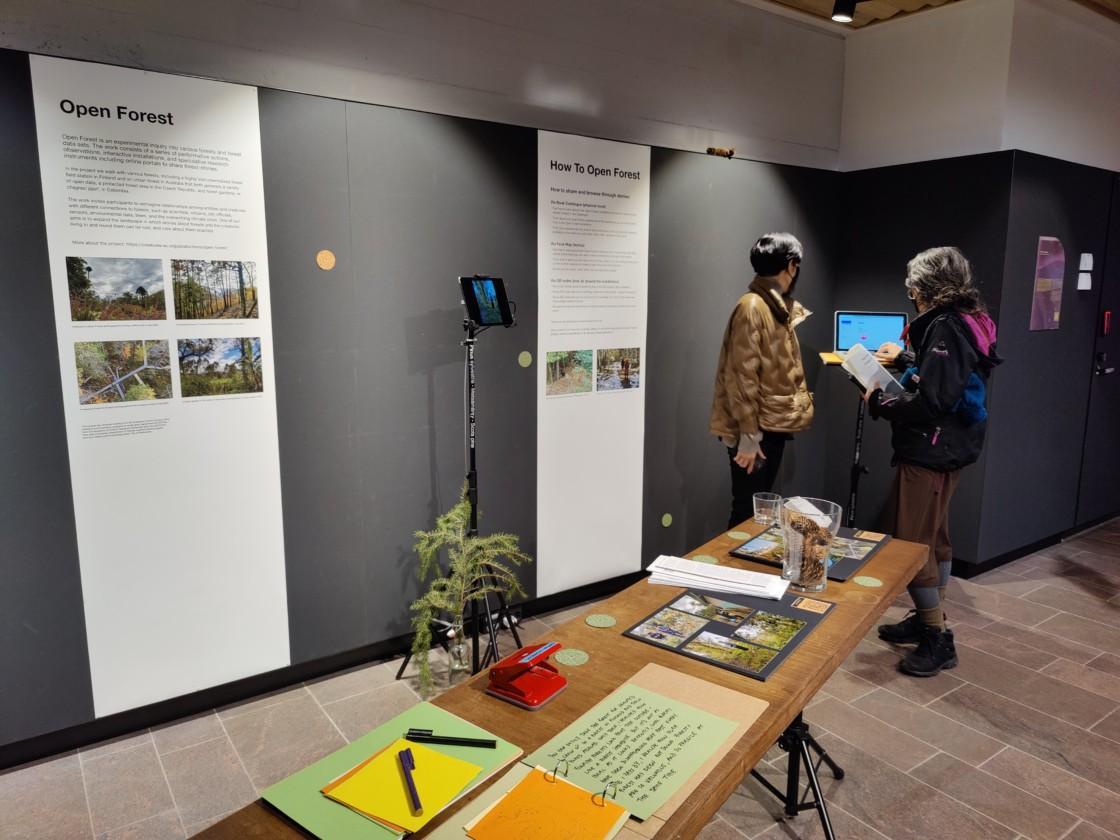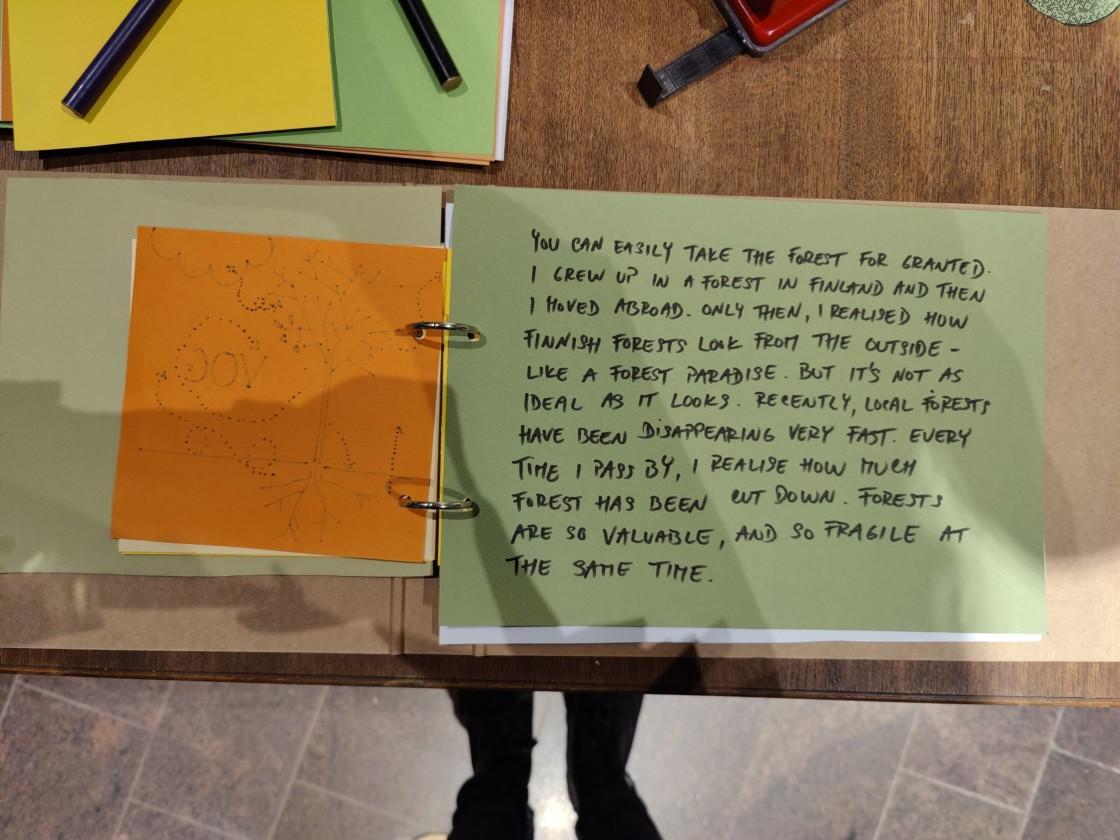Open Forest is an experimental design research inquiry into various forests and more-than-human dataflows. The project explores how forests and forest data can be produced, thought of and engaged with otherwise, in co-creative ways that consider perspectives of diverse forest creatures and reach beyond geo-engineering, techno-solutionist perspectives. The work consists of a series of experimental forest walks inviting participants to walk with various forest patches around the world and share their experiences in the form of forest-stories. Through these co-creative engagements, we aim to entangle the existing, mostly quantitative forest datasets with more messy and abstract data to question the currently available understandings of forests as a resource to be used.
As complex ecosystems, forests provide an environment for living and dying for many species: they are places of refuge, myths, folktales, and sensorial pleasures but also sites for control and industrial extraction of natural materials. The modern, western traditions of forest management and environmental policies tend to see forests as a resource to be leveraged to improve human lives – for example, through timber yields and stocks or carbon sink cultivation. Increasingly, and particularly in urban environments, forests are used to protect – not all but a small number of select – humans from perils of ecological disasters such as high temperature, ozone, and other health-related consequences. In these challenging times, there is an urgent need to better understand, care for and imagine better forest futures.
The Open Forest project aims to provide a space for co-creative engagements with such imaginaries, by inviting diverse forest creatures, including forest dwellers, Indigenous forest guardians, healers, scientists, data managers, artists, designers, as well as dogs and trees, to walk together and share their stories. The walks are performative and open-ended, centered around the elements of spontaneity, surprise and curiosity: we walk both physically and remotely, together and apart, sometimes in actual forests and sometimes through data-based representations of them, guided by various human and non-human navigators with good knowledge or sense of local landscapes. Through these multi-disciplinary and multi-species encounters, we hope to better understand how various stakeholders make sense of forest; questioning what can constitute a forest dataset, how it can be produced, and by whom while shifting the focus towards experiential insights shared by diverse walkers.
Since autumn 2020, we have walked with multiple forests in various parts of the world, including a highly instrumentalized forest field station in Finland, an urban forest in Australia, a protected forest area in the Czech Republic and forest gardens, or chagras, in Colombia.
In Finland, the creative work and research are situated in Helsinki and its surroundings (e.g., Sipoonkorpi National Park ) and in the Hyytiälä forestry field station in Juupajoki. Facilitated by designers and researchers from Aalto University, the first seeds of the Finnish part of the project were showcased in the A Bloc shopping center space, where we worked for six months (November 2020 – April 2021) and interviewed various forest stakeholders including forestry researchers, tree physiologists, artists, and forest data managers about their relationships to the forest.
Following the A Bloc installation and interviews, we have been organising a series of forest walks inviting both physical and online participation. The first five walks took place at, and were physically broadcasted from, the SMEAR II station in the Hyytiälä research forest. Two of these SMEAR II walks were performed as part of the 4th Research Pavilion Helsinki where they were accompanied by workshops and a week-long public exhibition. During the walks, we narrated stories of the SMEAR II station, showing details of sensors and other research instruments that gather data about various exchanges between trees, soil, and the atmosphere.
Participants were invited to reflect via a group discussion and share their own forest stories via the Feral Map, an online interface enabling exchanges of diverse more-than-human data. The initial version of the Map drew upon Urban Forest open data maintained by the City of Melbourne and later grew to include tree datasets from Helsinki, Vienna, Barcelona, Central Bohemia, and the SMEAR II station in the Hyytiälä research forest.
In Australia, the creative work is situated in Melbourne and facilitated by designers and researchers from RMIT University focusing specifically on open and alternative data generated within the local urban forest – a complex ecosystem of more than 70,000 trees each with unique IDs.
The RMIT group has co-creatively developed the Feral Map, which was launched as part of their shapeshifting More-than-Human Dérive portal engaging people in playful ways of sensing and listening to perspectives of diverse forests and forest creatures. Inspired by the Situationist International’s artistic strategies, the portal invites people to drift and “drop their relations, their work and leisure activities, and all their other usual motives for movement and action, and let themselves be drawn by the attractions of the terrain and the encounters they find there” (Guy Debord).
More-than-Human Dérive proposes that, through drifting, we might augment sensing and knowing what surrounds us to include more-than-human stories, ‘voices’, and perspectives by exploring new ways of mapping with expanded, multisensory ideas of data. The first Dérive took place in May 2021 at the Melbourne Knowledge Week and invited driftings through the Melbourne Urban forest. The second Dérive happened at the online Uroboros 2021 festival, as part of the CreaTures Feral Creative Practices program track.
In the Czech Republic, we have walked with a patch of forest in Central Bohemia, in the protected landscape area Křivoklátsko, which presents a unique ecosystem with a mosaic of species-rich habitats. Sixty-two percent of the total 628 km2 area consists of broad-leaved and mixed coniferous forests and contains a high species diversity (about 1800 vascular plant species alone and 84 native species of trees, shrubs, and other creatures).
The Bohemian walks are guided by Chewie the dog – a creature with extensive sensorial knowledge of the local forest landscape. We follow Chewie as an experienced forest navigator, trusting his instincts and sense of direction, drifting through forest places, spaces and situations that we might never discover otherwise. We walk without a map, letting Chewie decide where he wants to walk: we walk-with and wait, what will come our way. The point is to see what can we learn as humans if we give up on our control over our movements through time and space and try to attune to a rhythm and interests of a non-human creature.
To document our drifts, we experiment with the OsmAnd map tracker, getting gpx outputs with details of each drift’s distance, altitude range, time span, and average speed. More importantly, however, we sniff, listen, touch, and observe the local surroundings carefully. This more-than-human approach to forest-walking has revealed some experiences that would otherwise stay hidden to us, like the easiness of not measuring time and not following any roadmap, or the reinvigorating effects of rolling in the comfortable soft moss bed that spreads all over the forest floor.
In Colombia, the Open Forest walks take place in Bëngbe Uáman Tabanoc, on the eastern edge of the southern Colombian Andes. Tabanoc is the ancestral territory of the Kamëntŝa people, what is known today as the Sibundoy Valley. The valley is surrounded on all sides by steep mountains, and usually covered by clouds and abundant rains, its waters are funneled into the valley, forming the headwaters of the Putumayo River, a major Amazonian tributary. There is an incredible plant diversity in the valley, partly explained by its unique geographic context.
Open Forest walks in Tabanoc are guided by Kamëntŝa women, who are known for weaving colorful patterned sachets called tšombiachs. The belts document – in intricate and complex ways – stories and environmental knowledge of the territory and their relationship with their forest gardens past and present.
In November 2021 – February 2022, some insights from the unfolding Open Forest experiment in the above-mentioned forests are showcased at the Data Vitality exhibition organised by Aalto University (FI). In June 2022, we are showcasing our Open Forest elements at the CreaTures Festival in Seville, and in September 2022, we follow with an exhibition at the Designs for Cooler Planet event organised as part of the Helsinki Design Week. In the meantime, we are working on the interactive Open Forest Catalogue compiling all the forest-stories, observations, and insights collected throughout the project.
The Open Forest project creates an occasion for playful encounters and lively discussions about forests and related environmental issues such as climate change. We aim to reach beyond discussing these issues in theory and bring them on a local, personal and down-to-earth scale. The project is ongoing and we keep walking – see the News section below for upcoming walks as well as documentation of past events.
